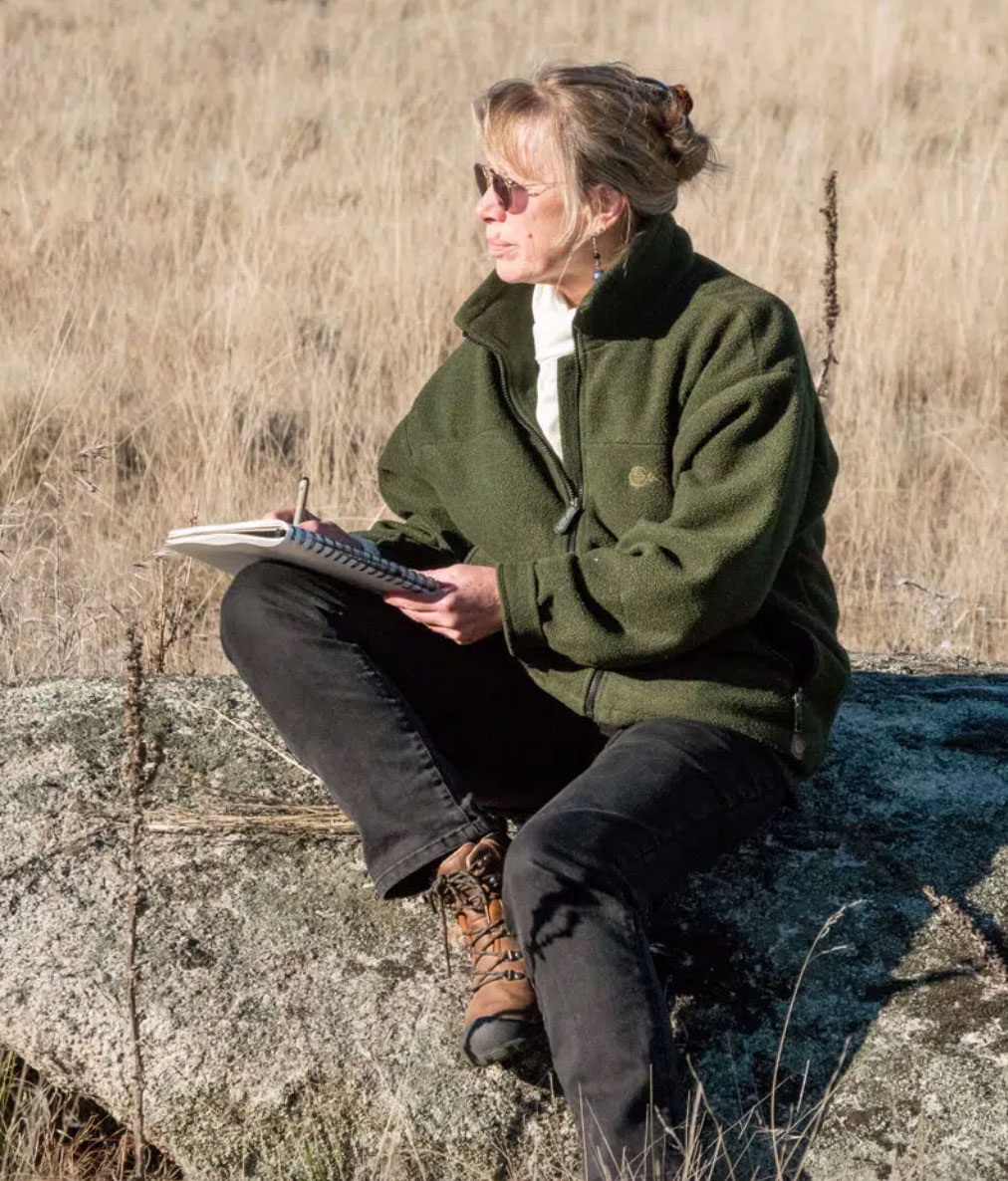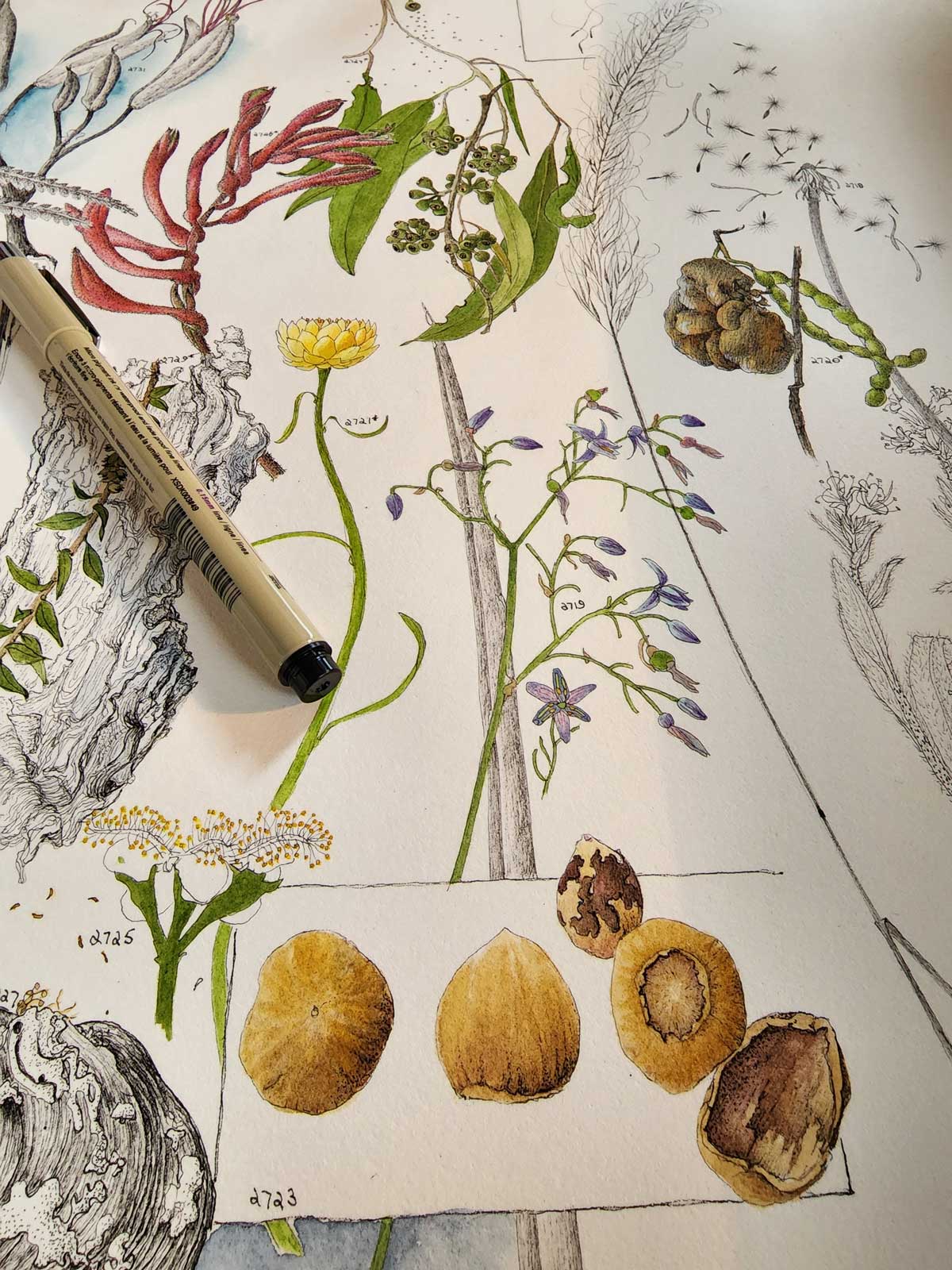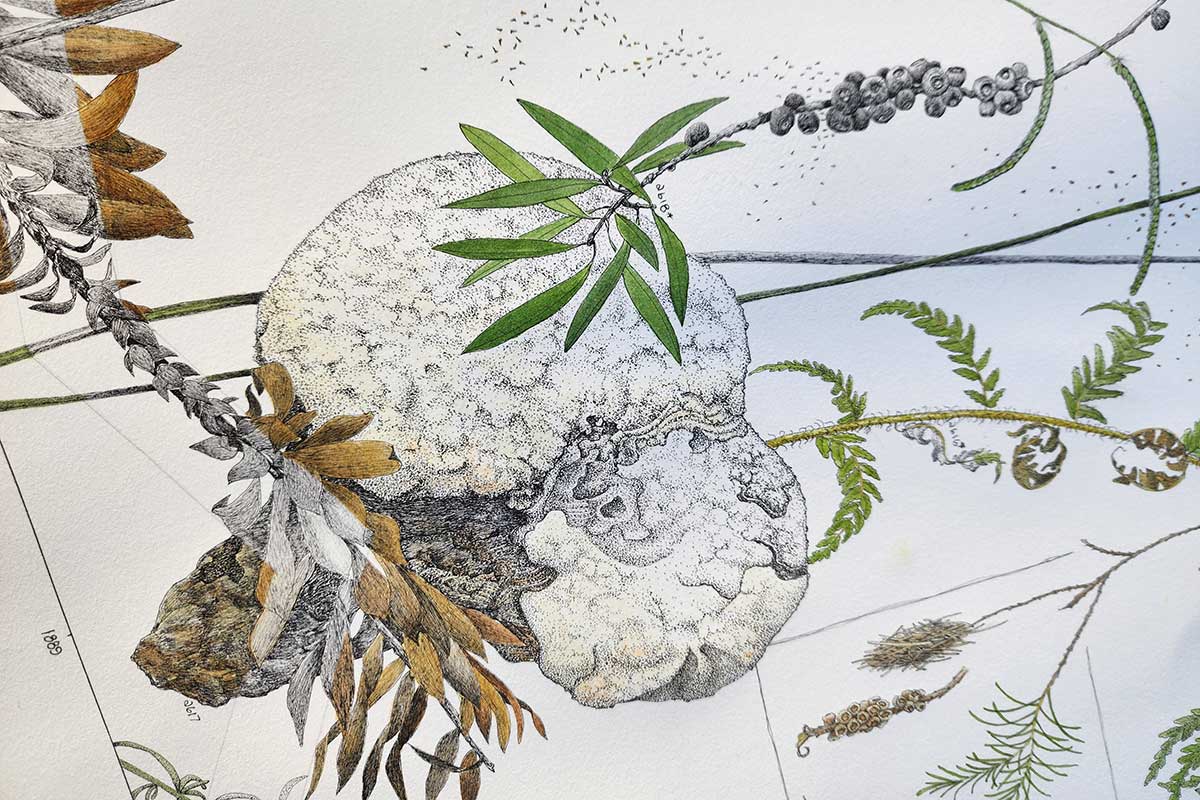Australian botanical artist Sharon Field wages a personal protest against global warming
Esteemed Australian botanical artist Sharon Field is waging a personal protest against global warming.
And in doing so, she is creating a monumental piece of art which is sparking international interest.
Sharon is making Australia’s own version of the Bayeux Tapestry (the historic 11th Century tapestry depicting the Normal conquest of England and measuring approximately 68 metres). Sharon’s ink and watercolour-on-paper scroll is entitled “3000 days…and counting…”
It is a massive undertaking, involving a commitment to paint small segments of nature each day until the year 2030. That will take 3000 days. When completed, Sharon estimates her scroll will stretch for more than 70 metres.
View this post on Instagram
The artwork connects the point at which, towards the end of 2021, the Intergovernmental Panel on Climate Change told the world it needed to limit the global temperature rise to 1.5 degree Celsius by 2030, and the cut-off date for action.
“When I read the report I felt a real kick in the guts. I am an artist, not a scientist, so I decided my own personal protest would be to draw something every day for 3000 days.”
Sharon’s work has already captured international attention and is the subject of poetry and musical scores. It has been presented live in New York, Vienna and Romania, and she has done three virtual presentations in the USA and one in France.
“On Sunday I had an hour-long conversation with a young women in Alaska, who saw it online and was so inspired, she is starting her own scroll for Alaska.”
“I could have painted a series of discrete images, or created a specific-purpose journal, but I decided on a scroll because it would remain intact, it would tell a story and it would have a visual impact.”
“This scroll has become a visual representation of all the countless words and warnings people have heard about the impact of climate change and which now, they just don’t hear any more.”

From her studio in Burra, Sharon has spent up to 1500 hours on the scroll. Starting on Earth Hour Day, 26 March 2022, Sharon has now completed 550 drawings. Each takes at least an hour but she can spend several hours each day embellishing her work. Despite some days feeling less inclined than others, Sharon has not missed a day.
While the scroll is one artwork, the paper is divided into eight separate 9-10 metre long scrolls for ease of transport and access. Each image is numbered, dated and described with its botanical and common names, and each has a small story attached to it. This information is held in a database.
“One plant a day is drawn directly onto the paper – no preliminary pencil sketches are done. The nature of the scroll means that I cannot easily plan the placement of each plant. I do one drawing after the other using a fine point black pen, holding archival ink. The colour is watercolour, which is painted over the pen.”
She draws what she finds each day. From a lady beetle to a pinecone to a flower. Sharon is incorporating NASA global mean surface temperature readings into her work—as the plants pass through the graph, the beautiful water colours cut out and each plant becomes black and white.

“The visual message will become more dire as the scrolls develop, because that is the current reality. The drawings will remain beautiful and detailed, but there will be an increasing punch in the message as time goes on—there has to be. We need to be less complacent and more proactive so that we are inspired to become part of a solution, not the problem.”
Sharon said the final scroll will be based on extinct species in Australia but makes a hopeful point. “If we as a nation are able to get our act together to reduce emissions the final entry on scroll in 2,500 days time could be much more colourful.”
Since embarking on the work, Sharon has delighted in the conversations it has provoked about the environment, and what can be done to salvage our fragile planet.
“People engage with the artwork in ways that they cannot with statistics, news or journal articles. Some have been reduced to tears, because above all else, this artwork highlights the beauty of our unique biodiversity, and how we are risking it all through inaction.”
Find out more about Sharon’s work at sharonfieldartist.com.au




